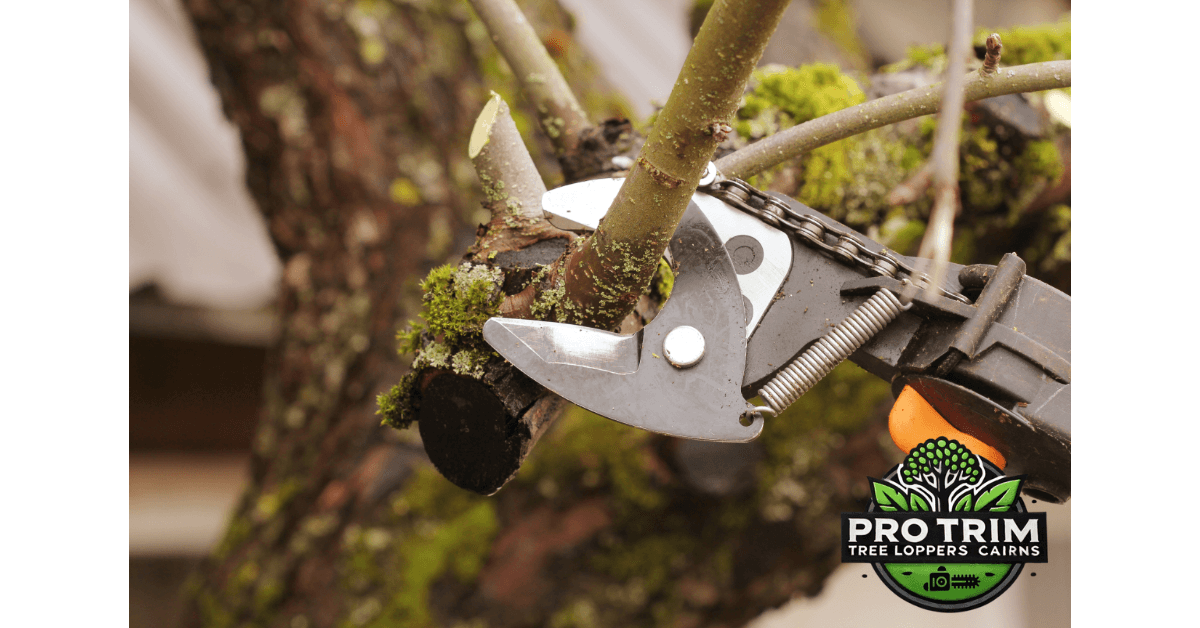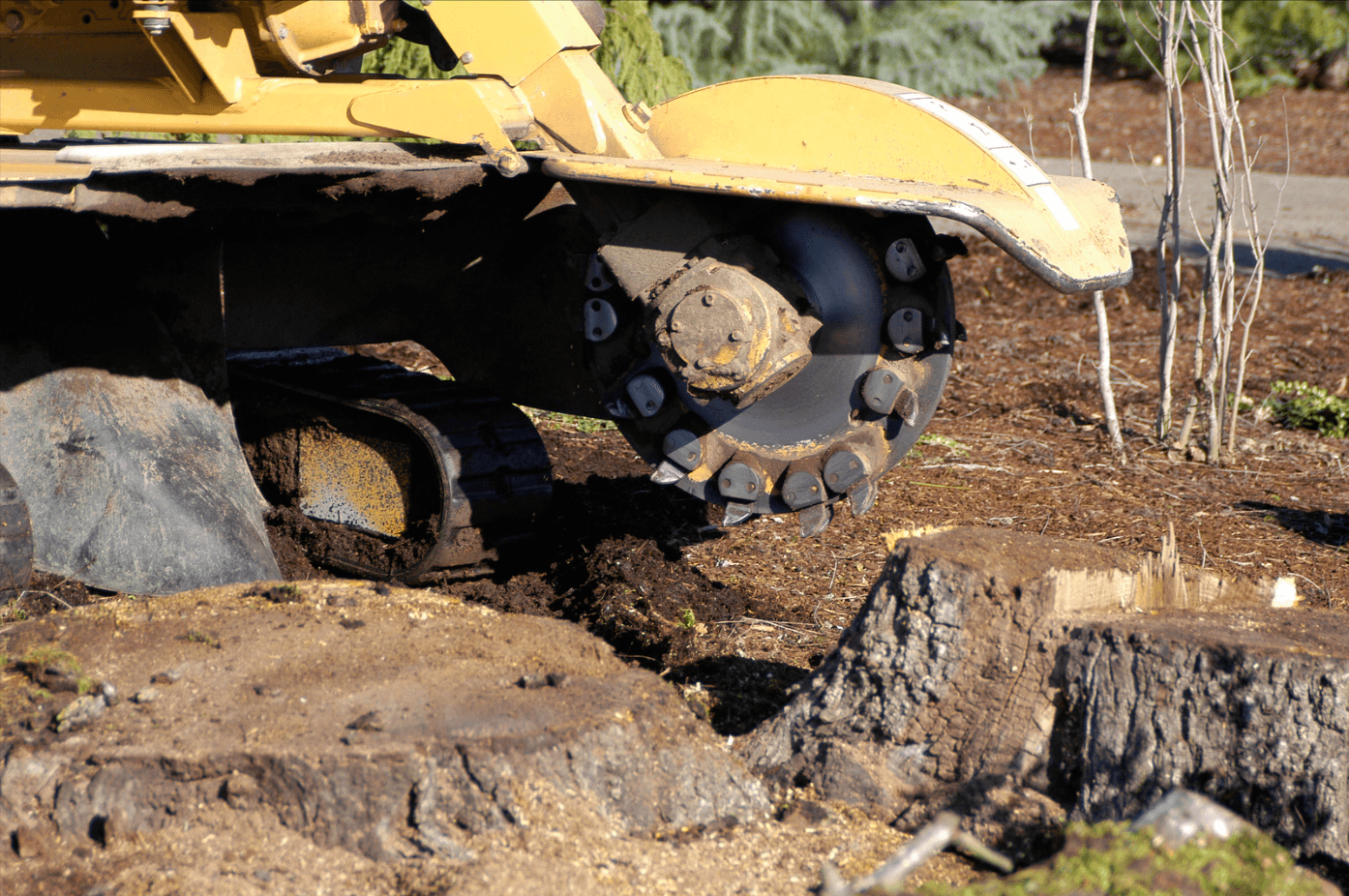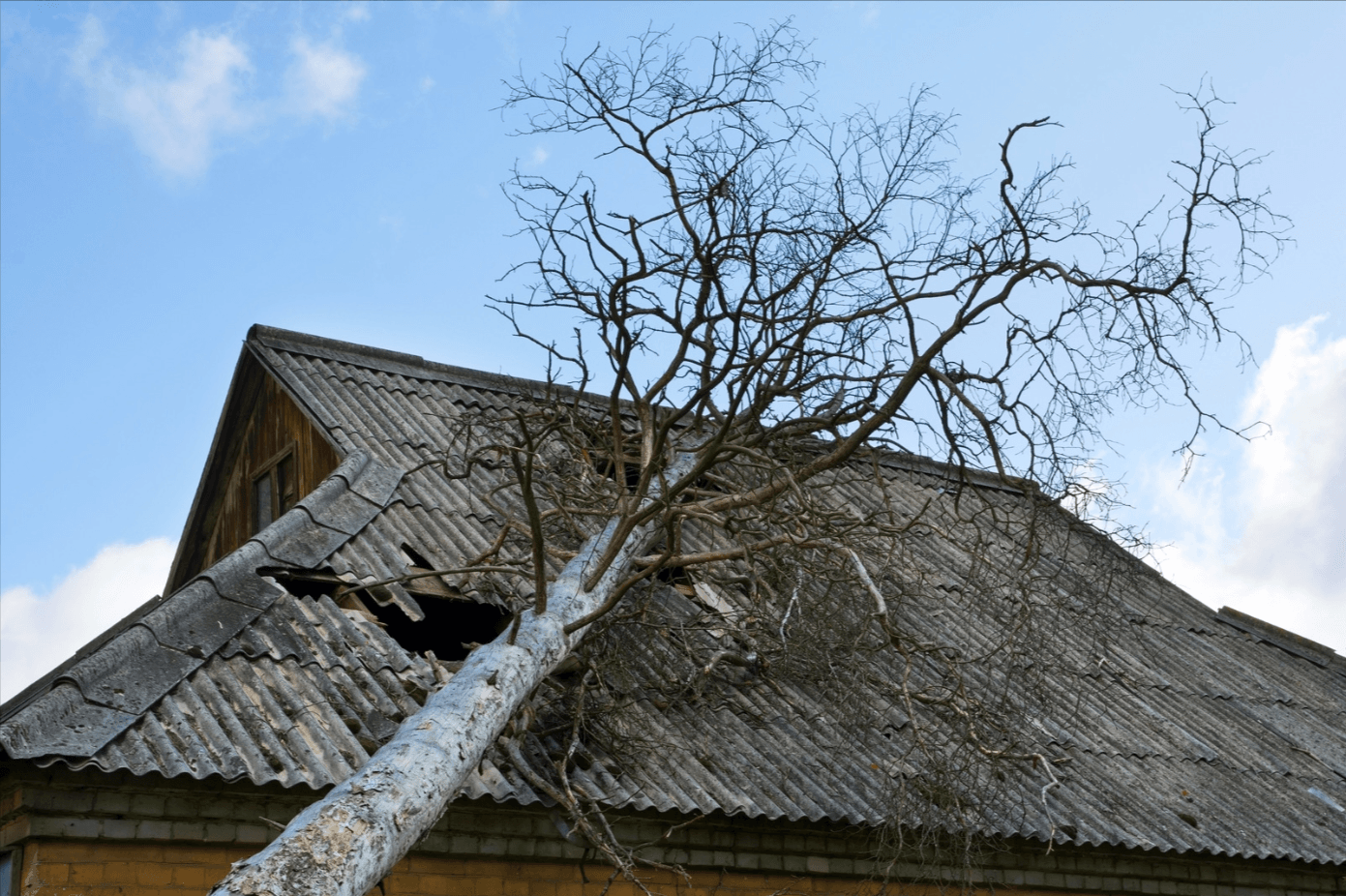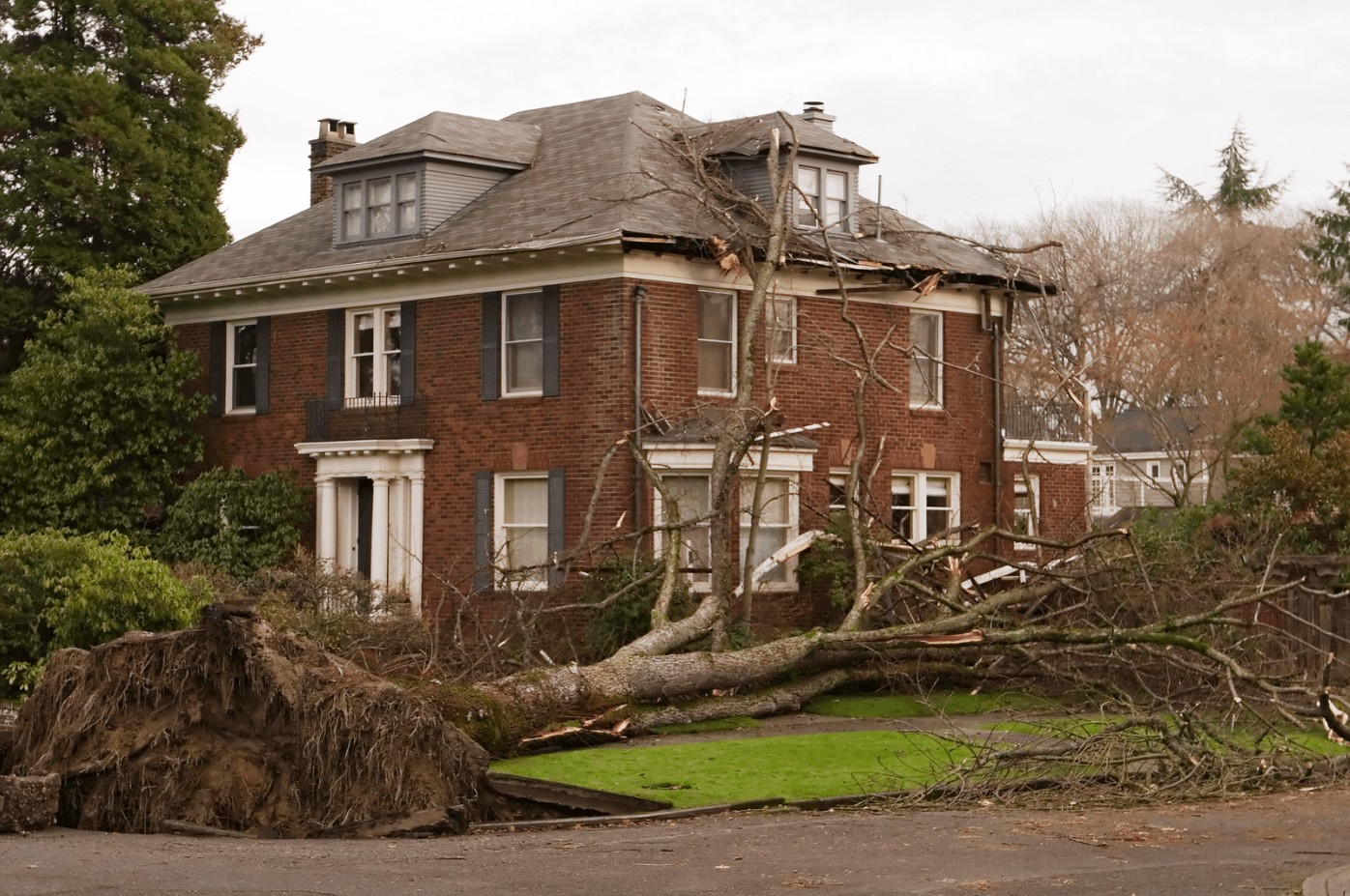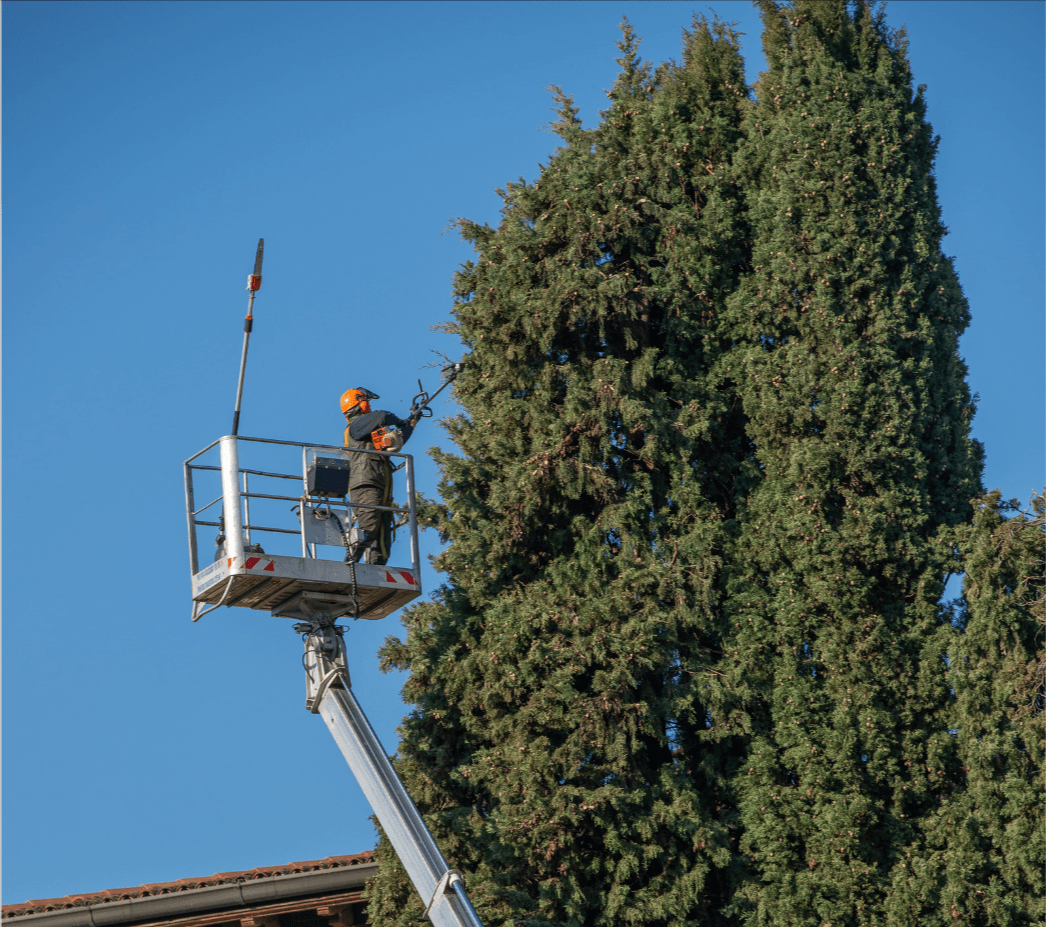Regular tree pruning is a crucial aspect of maintaining a healthy, safe, and attractive landscape in Cairns. While many property owners may view pruning as merely a cosmetic practice, its benefits extend far beyond aesthetics. Pro Trim Tree Loppers Cairns understands that proper pruning is essential for the long-term health of trees, the safety of property and people, and the overall beauty of our tropical urban environment.
This comprehensive guide will explore the numerous benefits of regular tree pruning, focusing on how it enhances both tree health and safety. We’ll delve into the scientific reasons behind pruning practices, the practical advantages for property owners, and the broader environmental impacts. By understanding these benefits, you’ll be better equipped to make informed decisions about tree care on your Cairns property.
Health Benefits
Regular pruning plays a vital role in maintaining and improving tree health:
Removal of dead or diseased branches
Pruning out problematic branches is crucial for tree vitality:
- Disease control:
- Removing infected branches can prevent the spread of diseases
- Helps isolate and eliminate fungal or bacterial infections
- Pest management:
- Dead branches often harbour insect pests
- Removal reduces hiding places and breeding sites for harmful insects
- Energy conservation:
- Trees expend energy trying to sustain dead or dying branches
- Pruning allows the tree to redirect resources to healthy growth
Expert tip: When removing diseased branches, always disinfect tools between cuts to prevent spreading pathogens.
Improved air circulation and sunlight penetration
Proper pruning enhances the tree’s growing environment:
- Reduced fungal growth:
- Better air flow through the canopy decreases humidity
- Lower humidity levels discourage fungal spore germination
- Enhanced photosynthesis:
- Increased sunlight reaching inner branches promotes leaf growth
- More efficient photosynthesis leads to stronger, healthier trees
- Balanced growth:
- Even distribution of sunlight encourages uniform canopy development
- Helps prevent weak, elongated branches reaching for light
Pruning technique: Use thinning cuts to open up the canopy without stimulating excessive new growth.
Stimulation of new growth
Strategic pruning can invigorate trees:
- Renewed vigour:
- Pruning stimulates the production of new shoots and leaves
- Particularly beneficial for older trees or those in decline
- Shaped growth:
- Directs the tree’s energy to desired areas of growth
- Useful for training young trees or restoring shape to mature ones
- Fruit production:
- In fruit trees, pruning can stimulate the development of new fruiting wood
- Leads to improved fruit quality and quantity
Seasonal consideration: In Cairns, prune during the dry season to minimise stress and reduce the risk of fungal infections.
Prevention of pest and disease spread
Regular pruning is a key component of plant health management:
- Early detection:
- Frequent pruning allows for close inspection of tree health
- Enables early identification and treatment of pest or disease issues
- Isolation of problems:
- Prompt removal of affected parts can contain infections or infestations
- Prevents issues from spreading to healthy parts of the tree or nearby plants
- Environmental control:
- Proper pruning creates less favourable conditions for pests and diseases
- Reduces hiding places and improves the effectiveness of treatments
Professional insight: Combine regular pruning with a comprehensive plant health care program for optimal results.
Safety Benefits
Pruning is not just about tree health; it’s also crucial for ensuring safety:
Reduction of falling branch risks
Proactive pruning minimises hazards from falling branches:
- Deadwood removal:
- Eliminates branches that are most likely to fall
- Particularly important before storm seasons
- Weight reduction:
- Thinning heavy branches reduces the risk of breakage
- Especially crucial for trees with structural weaknesses
- Crown cleaning:
- Removes small dead twigs and stubs
- Prevents minor debris fall during winds or storms
Safety priority: Focus on removing branches overhanging structures, walkways, or high-traffic areas.
Improved visibility for traffic and pedestrians
Pruning enhances safety in urban and suburban settings:
- Street visibility:
- Ensures traffic signs and signals are clearly visible
- Improves sightlines at intersections and driveways
- Pedestrian safety:
- Maintains clear pathways on footpaths and walkways
- Reduces risks of head injuries from low-hanging branches
- Property access:
- Keeps entrances and exits clear for emergency vehicles
- Ensures clear access for utility services
Municipal cooperation: Work with local councils to address trees affecting public spaces or utilities.
Prevention of property damage
Regular pruning can protect structures and infrastructure:
- Building protection:
- Prevents branches from rubbing against roofs or walls
- Reduces risk of damage during high winds or storms
- Utility line clearance:
- Maintains safe distances from power lines
- Prevents outages and fire risks from tree contact with electrical infrastructure
- Root management:
- Above-ground pruning can influence root growth patterns
- May help mitigate risks to foundations, pavements, and underground utilities
Insurance consideration: Many insurance policies require regular tree maintenance to maintain coverage for tree-related damages.
Mitigation of storm damage potential
Pruning plays a crucial role in preparing trees for severe weather:
- Wind resistance:
- Proper thinning allows wind to pass through the canopy more easily
- Reduces the sail effect that can lead to tree failure
- Load reduction:
- Removes excess weight that could cause branch or trunk failure
- Particularly important for trees with structural defects
- Damage limitation:
- Strategic pruning can direct potential failures away from targets
- Minimises the impact of any storm-related tree damage
Cyclone preparedness: In Cairns, consider additional pruning before cyclone season to enhance tree resilience.
Structural Benefits
Proper pruning contributes significantly to the overall structure and longevity of trees:
Shaping for optimal growth patterns
Strategic pruning guides tree development:
- Formative pruning:
- Shapes young trees for strong future structure
- Establishes proper branch spacing and angles
- Corrective pruning:
- Addresses issues like crossing or rubbing branches
- Removes or reduces co-dominant stems to prevent future splitting
- Restoration pruning:
- Helps rehabilitate trees damaged by storms or improper pruning
- Gradually restores a more natural and stable form
Long-term planning: Start shaping trees early in their life for the best long-term results.
Correction of structural defects
Pruning can address and prevent structural issues:
- Weak branch unions:
- Identifies and removes branches with poor attachments
- Prevents future branch failures
- Branch density management:
- Thins crowded areas to reduce weight and wind resistance
- Promotes better branch spacing for long-term stability
- Leader establishment:
- Ensures the development of a strong central leader in appropriate species
- Crucial for maintaining good tree form and structure
Professional assessment: Regular inspections by certified arborists can identify structural issues before they become severe.
Balancing of tree canopy
Even canopy distribution is crucial for tree health and stability:
- Weight distribution:
- Ensures the tree’s weight is evenly balanced
- Reduces stress on the trunk and major limbs
- Symmetry improvement:
- Corrects lopsided growth that can lead to instability
- Enhances the tree’s overall appearance
- Light penetration:
- Balances sunlight distribution throughout the canopy
- Promotes even growth and reduces the risk of branch die-back
Pruning technique: Use reduction cuts to shorten and balance extended or heavy limbs.
Training young trees for future form
Early pruning sets the stage for healthy mature trees:
- Branch structure development:
- Establishes proper branch spacing and angles early on
- Reduces the need for major corrective pruning in the future
- Root-to-shoot balance:
- Helps maintain a proper balance between the root system and canopy
- Crucial for newly planted trees to establish successfully
- Species-specific shaping:
- Guides trees to develop their natural form
- Considers the ultimate size and shape of the mature tree
Educational approach: Teach property owners about the importance of early pruning for long-term tree health and structure.
Aesthetic Benefits
While health and safety are primary concerns, the aesthetic improvements from pruning shouldn’t be overlooked:
Enhanced visual appeal of landscape
Pruning significantly impacts the overall look of your property:
- Cleaner appearance:
- Removes dead, diseased, or unsightly branches
- Creates a more manicured and cared-for look
- Improved tree form:
- Enhances the natural shape and structure of trees
- Can create more aesthetically pleasing silhouettes
- Landscape integration:
- Helps trees fit better with overall landscape design
- Can frame views or create visual focal points
Design consideration: Work with a landscape designer to ensure pruning aligns with your overall garden aesthetic.
Maintenance of desired tree size and shape
Pruning allows control over tree dimensions:
- Size management:
- Keeps trees at an appropriate size for their location
- Particularly useful in small gardens or near structures
- Shape control:
- Maintains desired forms, whether natural or more formal
- Can create specific shapes for ornamental purposes
- Vista pruning:
- Selectively prunes to maintain or create views
- Balances tree preservation with view enhancement
Technique tip: Use reduction cuts rather than topping to maintain size while preserving natural form.
Improved flowering and fruiting in ornamental trees
Proper pruning can enhance the ornamental value of trees:
- Flower production:
- Encourages more abundant blooming in flowering trees
- Timing of pruning can influence flowering cycles
- Fruit quality:
- In fruit trees, pruning can improve fruit size and quality
- Helps maintain a balance between vegetative and reproductive growth
- Seasonal interest:
- Can highlight attractive bark or branch structures in deciduous trees
- Enhances the visibility of fruit or autumn colours
Species-specific advice: Consult with an arborist for pruning advice tailored to specific ornamental species common in Cairns.
Environmental Benefits
Regular pruning contributes to broader environmental health:
Increased carbon sequestration through healthier growth
Well-maintained trees are more effective at capturing carbon:
- Enhanced photosynthesis:
- Pruned trees often have more efficient leaf area
- Leads to increased CO2 absorption and oxygen production
- Prolonged tree life:
- Proper pruning can extend a tree’s lifespan
- Longer-lived trees continue to sequester carbon for more extended periods
- Biomass increase:
- Encourages healthy growth, increasing overall biomass
- More biomass equals more carbon storage
Environmental impact: Emphasize the role of well-maintained urban trees in combating climate change.
Enhanced wildlife habitat
Thoughtful pruning can improve trees as wildlife habitats:
- Nesting sites:
- Proper pruning can create or preserve suitable nesting locations
- Particularly important for native bird species
- Food sources:
- Pruning can stimulate fruit or seed production
- Provides food for various wildlife species
- Habitat diversity:
- Creates a range of microhabitats within the tree structure
- Supports a diverse array of insects, birds, and small mammals
Eco-friendly approach: Balance habitat preservation with necessary pruning for tree health and safety.
Improved overall ecosystem health in urban areas
Well-pruned trees contribute to urban ecology:
- Air quality improvement:
- Healthy trees are more effective at filtering air pollutants
- Contributes to better overall air quality in urban areas
- Temperature regulation:
- Properly maintained canopies provide more effective shade
- Helps mitigate urban heat island effects
- Stormwater management:
- Healthy trees with good canopy structure intercept more rainfall
- Reduces stormwater runoff and associated pollution
Urban planning perspective: Highlight the role of well-maintained trees in creating healthier, more livable urban environments.
Economic Benefits
Regular pruning can have positive financial implications:
Increased property value
Well-maintained trees can boost property values:
- Curb appeal:
- Attractive, healthy trees enhance a property’s visual appeal
- Can significantly impact first impressions for potential buyers
- Perceived maintenance:
- Regular pruning indicates good property upkeep
- Suggests lower maintenance costs for future owners
- Mature tree value:
- Properly maintained mature trees are valuable landscape assets
- Can add substantial value to property assessments
Real estate insight: Highlight the value of well-maintained trees when marketing properties in Cairns.
Reduced long-term tree care costs
Proactive pruning can lead to cost savings over time:
- Prevention of major issues:
- Regular maintenance prevents the need for costly emergency tree work
- Reduces the likelihood of property damage from falling branches
- Extended tree lifespan:
- Well-maintained trees typically live longer
- Delays the need for expensive tree removal and replacement
- Efficient resource use:
- Proper pruning can reduce water and fertilizer needs
- Results in lower ongoing maintenance costs
Cost-benefit analysis: Demonstrate how regular, modest pruning investments can prevent more significant future expenses.
Prevention of expensive emergency tree work
Regular pruning minimizes the need for emergency services:
- Risk reduction:
- Identifies and addresses potential hazards before they become emergencies
- Reduces the likelihood of storm-related tree failures
- Planned maintenance:
- Allows for budgeting and scheduling of tree work
- Avoids premium costs associated with emergency callouts
- Minimized damage:
- Reduces the potential for costly property damage from tree failures
- Can prevent injuries and associated liability issues
Insurance perspective: Many insurance providers offer reduced premiums for properties with documented regular tree maintenance.
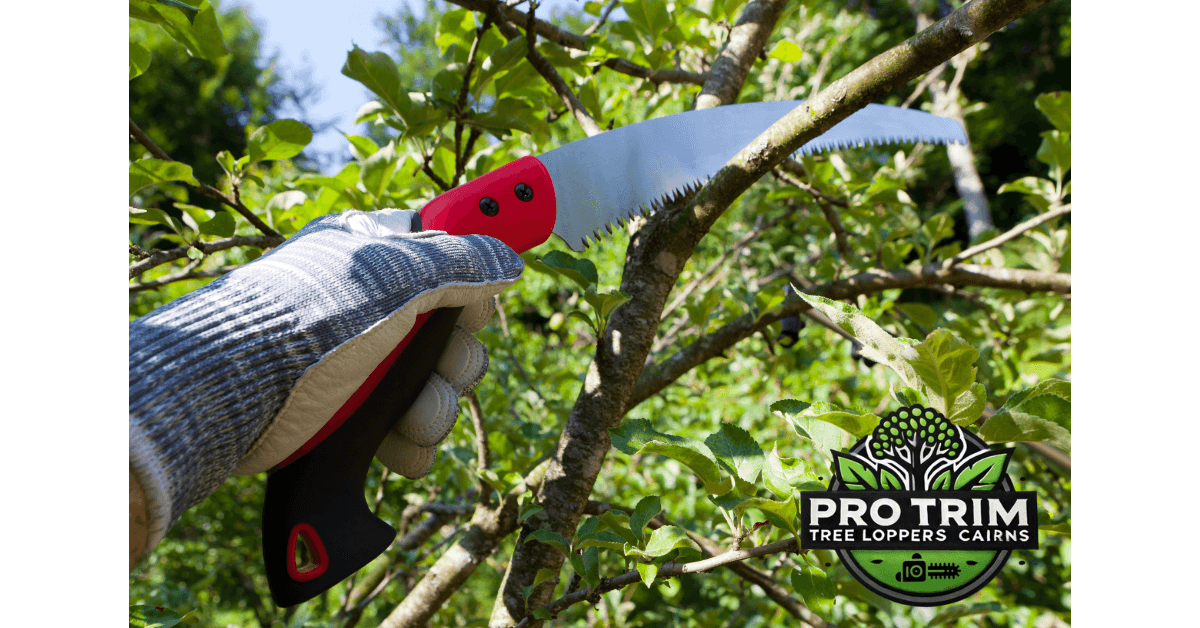
FAQ
How often should trees be pruned?
Pruning frequency depends on various factors:
- Tree species:
- Fast-growing species may need annual pruning
- Slower-growing trees might only need pruning every 3-5 years
- Tree age:
- Young trees often benefit from more frequent, light pruning
- Mature trees typically require less frequent but more extensive pruning
- Location and purpose:
- Trees near structures or in high-traffic areas may need more frequent pruning
- Fruit trees often require annual pruning for optimal production
- Health and condition:
- Trees with health issues may require more frequent attention
- Storm-damaged trees might need immediate and follow-up pruning
Professional recommendation: Consult with a certified arborist to develop a pruning schedule tailored to your specific trees and situation.
Can pruning damage a tree?
While pruning is beneficial when done correctly, improper techniques can harm trees:
- Over-pruning:
- Removing too much live tissue can stress the tree
- May lead to sunscald on exposed bark or stimulate excessive sucker growth
- Poor cutting techniques:
- Improper cuts can create wounds that don’t heal properly
- May lead to decay or entry points for pests and diseases
- Pruning at the wrong time:
- Some trees are sensitive to pruning during certain seasons
- Pruning at the wrong time can affect flowering or increase disease susceptibility
- Topping:
- Severe cutting back of tree tops is highly damaging
- Can lead to weak regrowth, decay, and ultimately tree death
Best practice: Engage qualified arborists who understand proper pruning techniques and timing for Cairns’ tree species.
What’s the best season for pruning in Cairns?
Optimal pruning times in Cairns consider our unique tropical climate:
- Dry season (Winter) pruning:
- Generally the best time for most tree species
- Lower humidity reduces the risk of fungal infections in pruning wounds
- Trees are often less active, minimizing stress
- Wet season considerations:
- Avoid heavy pruning during the peak of the wet season
- If necessary, prune on dry days and apply wound dressings to prevent fungal entry
- Species-specific timing:
- Some flowering trees should be pruned after blooming
- Fruit trees often benefit from pruning just before the growing season
- Emergency pruning:
- Can be done any time of year if there are safety concerns
- Take extra precautions with wound care during the wet season
Climate-smart approach: Develop a pruning calendar that aligns with Cairns’ seasonal patterns and the specific needs of your tree species.
How much of a tree can be safely pruned at once?
The amount of pruning a tree can safely tolerate varies:
- General rule:
- Avoid removing more than 25% of the live crown in a single pruning session
- Tree age considerations:
- Young trees can often tolerate heavier pruning
- Mature trees are more sensitive and should have less removed
- Species tolerance:
- Some species can handle more extensive pruning
- Others are sensitive and require a more conservative approach
- Tree health:
- Healthy trees can withstand more pruning
- Stressed or unhealthy trees should have minimal pruning
Professional guidance: Always consult with a certified arborist to determine the appropriate amount of pruning for your specific trees.
Conclusion
Regular tree pruning is a crucial practice that offers numerous benefits for tree health, safety, and the overall aesthetic and environmental quality of properties in Cairns. By understanding and implementing proper pruning techniques, property owners can ensure their trees remain vibrant, safe, and beneficial components of the landscape.
Key takeaways from this guide include:
- The importance of pruning for tree health and disease prevention
- Safety benefits of regular pruning, including reduced risks of falling branches
- Structural improvements that lead to stronger, more resilient trees
- Aesthetic enhancements that contribute to property value and enjoyment
- Environmental benefits that extend beyond individual properties
- Economic advantages of proactive tree care
Pro Trim Tree Loppers Cairns encourages property owners to view regular pruning as an investment in their landscape’s long-term health and value. Our team of experienced arborists is equipped to provide expert pruning services tailored to the unique needs of Cairns’ diverse tree species and tropical climate.
Remember that while pruning offers many benefits, it requires skill and knowledge to be done correctly. Improper pruning can cause lasting damage to trees. Always consider engaging professional services, especially for large trees or complex pruning needs.
By prioritizing regular, professional tree pruning, you’re not only enhancing the beauty and safety of your property but also contributing to the overall health of Cairns’ urban forest. Well-maintained trees play a vital role in our community, providing shade, improving air quality, and creating habitats for local wildlife.
For more information about tree lopping services, check them out below:


